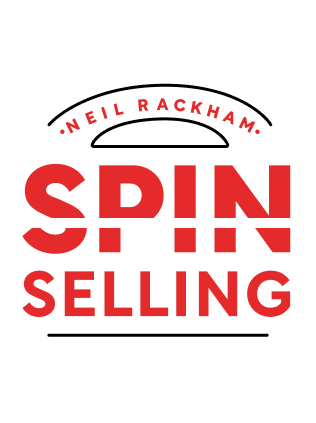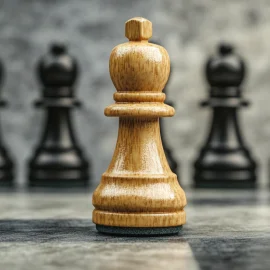

This article is an excerpt from the Shortform summary of "Spin Selling" by Neil Rackham. Shortform has the world's best summaries of books you should be reading.
Like this article? Sign up for a free trial here .
What is a sales cycle length, and what does it have to do with the SPIN selling method?
The sales cycle length can affect the entire SPIN selling method. The sale cycle length is something you have to keep in mind to consider how you go about pursuing a sale.
Knowing Your Sales Cycle’s Benefits
After the investigating stage of a sale where you ask SPIN questions, the next stage is demonstrating value. This stage, also referred to as demonstrating capability, is where you present your solution. In a major sale, some ways are more effective than others.
For the last 60 years, sales training has advocated using features and benefits to demonstrate value, or describe your products and services. The conventional wisdom has been that features are facts or characteristics about a product; they aren’t persuasive. Benefits are the ways features help the customer, and they’re a compelling way to present your solution’s value.
But research indicates that:
- The way reps are trained to use benefits is ineffective in larger sales.
- The traditional approach is likely to get a negative response.
- Defining a benefit is more complicated than it seems.
Length of the Selling Cycle
Small sales: Sales often can be handled with one call in which the customer buys on the spot. The salesperson may push hard to refute objections and close successfully. This works if it’s a one-time interaction where establishing a good relationship isn’t critical. But if the customer delays a decision, resentment created by the pressure tactics can be difficult for the sales rep to overcome in a subsequent interaction. Further, the power of a strong sales pitch wanes in a few days.
Major sales: In contrast, a major sale often requires making many sales calls to a customer over months. Since the customer doesn’t make a decision on the first call, pressure tactics that create resentment won’t work and might kill the sale by making it impossible for the sales rep to establish an ongoing relationship. In major or multi-call sales, customer deliberations occur between calls in the rep’s absence.
Effects on Longer Sales Cycle Length
Researchers found that in one company where the selling cycle was long (averaging 7.8 calls), the effects of focusing on features, advantages, and benefits varied at different points in the cycle.
The study found that:
- Citing features has little effect throughout the cycle.
- Benefits have a great impact whenever reps cite them.
- Advantages have a positive effect early in the cycle (contributing to an advance rather than a continuation), but as the cycle progresses, the effect diminishes.
- Advantages are less effective than benefits throughout the selling cycle.
Researchers theorized that the impact of advantages is greater at first because customers naturally expect to hear more about the seller’s product or solution earlier in the sale. However, at later stages, the customer expects a response to his needs. If the seller keeps talking about advantages at that point, they’ll have less of a positive effect.
Another possibility is that advantages tend to be forgotten between calls, while benefits are remembered because they relate directly to the customer’s unique needs.
An example of how advantages wane is the forceful sales rep who pushes his product on the customer in a first meeting and comes away feeling he’s been successful—but orders don’t materialize later, either because the customer is put off by the approach, or he has forgotten the advantages since they weren’t personalized.
Getting Commitment
Of course, your ultimate objective in a sales call is getting the customer to take a specific action—either to buy your solution or to do something else that advances the sale, such as attending a product demonstration. Traditional closing techniques that apply pressure don’t work in large sales—they create resentment and undermine the sale. Successful sales reps use several more effective ways of getting commitment in large sales:
1) They focus on investigating and demonstrating value. As noted previously, they spend more time investigating—discovering and developing customer needs—than less successful reps do. Their questions help the customer feel a pressing need to purchase the solution.
2) They check for unanswered questions and concerns. In large sales, the problems or needs and the solution can be complicated. Customers may have questions or need clarification. The reps most successful in getting a commitment ask customers whether there’s anything else they need to address, and then answer the questions.
3) They summarize the benefits. Calls involving major sales can cover a lot of ground and take considerable time. By the end, the customer will have lost track of key points. So it makes sense to summarize the key points before a decision. It also helps to drive home the benefits and urgency.
4) They propose, rather than ask for, a commitment. Reps are taught to explicitly ask for an order in the final stage of a call. But instead of asking, the most successful reps tell: they propose or suggest a next step. The proposed action meets two key criteria: it advances the sale, and it’s the most advanced step that’s reasonable for the customer—for instance, a rep might say, “Since we’ve discussed how the new system fixes your speed and reliability problems, may I suggest the next logical step would be a demonstration for your department?”
The length of the sales cycle can affect how you go about the sale, and it’s important to keep in mind the unique benefits of different sales cycles. The sales cycle length can help improve your sales relationship, or help you focus on major sales.

———End of Preview———
Like what you just read? Read the rest of the world's best summary of Neil Rackham's "Spin Selling" at Shortform .
Here's what you'll find in our full Spin Selling summary :
- What the SPIN in SPIN Selling stands for
- How to demonstrate real value to the person you're selling to
- How to get commitment from your customer to close the sale fast






